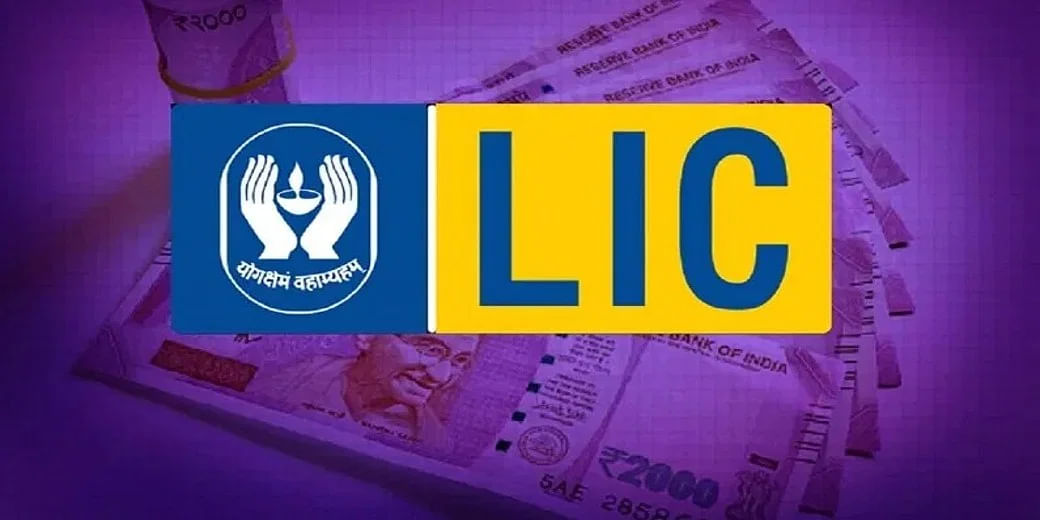Is this a good time to buy into LIC?
A large part of the company's income stems from single premium products which have low margins. Private companies in this sector are far more aggressive than LIC, and focus on high-margin products like ULIPs, credit protection and personal protection.

On 11th August, 2023, PM Modi had assured investors in the parliament that they can safely bet on shares of government companies, and especially on shares of those companies which were being ridiculed by everyone. Since then, the shares of government companies, i.e. PSU shares have only been on an upward journey, delivering manifold returns till date.
Keeping with this, government insurance company LIC’s shares also touched a record high of Rs 1,175 on February 9. However, post that, i.e. post the record high, the share has again lost 15%, having slipped below Rs 1,000.
So, what is the reason for this pressure on the share at higher levels? How are the valuations of this share compared to other companies and why are buyers currently staying away from this share despite it falling from record highs? Let’s understand.
Compared to its issue price of Rs 949, LIC’s share opened at Rs 867.20 on the BSE on May 17, 2022. This was lower than its adjusted price of Rs 889, because there was a discount of Rs 60/share for LIC policyholders and of Rs 45/share on the issue price for retail investors and employees.
Within the first week of June 2022, i.e. in less than a month, the share slipped below Rs 800-mark and on March 29, 2023, the share managed to touch a record low of Rs 530.20, meaning that the share had dipped by 44% from its issue price.
One major reason behind such a big fall in share value was LIC’s large stake in the Adani group shares. In the last week of February 2023, the value of LIC’s investment in Adani group’s shares first fell below the purchase value of Rs 30,127 crore. Among all these shares, the investment value of Adani Total Gas and Adani Enterprises saw the maximum decline.
Even before the report by the American short-selling firm Hindenburg Research on the Adani group was out on January 24, 2023, there were a lot of questions being raised about LIC’s huge investments in the heavily indebted Adani group.
In addition, a large part of the company’s income stems from single premium products which have low margins. Private companies in this sector are far more aggressive than LIC, and focus on high-margin products like ULIPs, credit protection and personal protection.
This is the reason why the company’s margins are lower as compared to other private companies. Not only this, but a decline in its market share has also put significant pressure on the stock. In September 2022, the company’s market share was 68.25%, which decreased to around 63.8% in February 2023, and to around 58% in October 2023. This means that within a span of a year, the company’s market share saw a substantial decline of almost 10%.
Also, behind the better returns delivered by LIC’s par or participating products as compared to its other products, is the role of its 95% surplus sharing policy. In participating products, policyholders get a share of the insurance company’s profits, in the form of bonuses and dividends. This surplus sharing includes the entire surplus of the non-participating book. However, with the beginning of fund segregation, surplus sharing has decreased to 90%, leading to a looming apprehension of pressure on the returns (bonus rates) of par products, which still account for around 82% of company’s income.
After PM Modi’s statement in August 2023, this wave of buying in PSU shares also swept LICs share, which touched a record high of Rs 1,175 in February 2024. But now, the share has slipped below Rs 1,000 again. This is despite the fact that, as compared to the market cap to embedded value ratio of 2-2.6x for HDFC Life, SBI Life and ICICI Prudential, LIC’s share is trading at a multiple of 0.9x.
This is because there is an apprehension that the government may sell its stake in the company yet again. In May 2022, the government sold 3.5% of its stake, raising around Rs 21,000 crore. Before the government’s move, the company had already started preparations to enter the health insurance business. It is possible that in the next budget, the government may also announce some tax incentives related to buying insurance under the new tax regime.
Stock market expert Ambareesh Baliga believes that one should buy the share around the Rs 900 level on the decline. The share can go up to the level of Rs 1,100 in 3 months. If you invest with a 6-9 month horizon, the share can also achieve targets of Rs 1,250 and Rs 1,275.
So overall, although the valuations of the share are cheap as compared to other companies in the sector, there is no sign of haste among buyers to buy the share after its recent fall, due to the ongoing concerns about the company’s business.